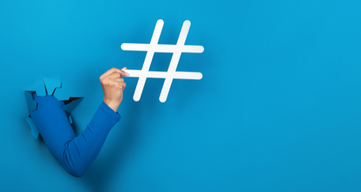
Learn how to use hashtags as a brand. They can help you take full advantage of Instagram as a platform for your business.
What are hashtags?
A hashtag is a singular term or series of terms used in the description of posts, the comments section, or in stories. They are easy to spot, as they are marked with the "#" symbol, and their main goal is to help the platform organize and categorize the content.
Goal: show the right content to the right users.
See a few examples below for a boutique fashion brand: #fashiontips, #dailyoutfit, #fashionboutique
Why should brands use them?
Hashtags are meant to help with discovery, exposure and traffic of your Instagram page.
When users perform searches on the platform to discover the products or the content they are interested in, they usually perform it via hashtags. Therefore, it's in your best interest as a brand to use the relevant hashtags and have your posts discovered, recommended or shared.
Bringing more traffic to your profile usually results in:
- More followers → audience growth
- Higher Engagement → more and more people discussing your products
- Sales → the ultimate goal for each brand
- Brand Awareness → simply, how many people know about your existence as a brand
Use Cases
Regular Hashtags
The most common use case is hashtags that people use in singular posts to boost exposure. You can add up to 30 hashtags to a post, inside the caption or in the first comment 👇
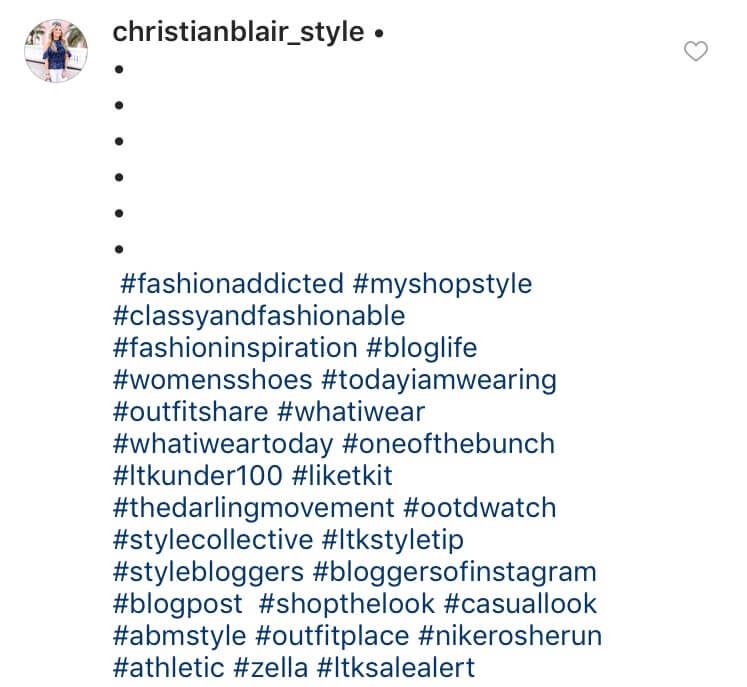
Brand Hashtags
Strong hashtags like the #ImpossibleIsNothing by Adidas. These hashtags are instantly associated with a brand and are used to create a strong community around the specific brand, a social cause or a movement 👇

Campaign Hashtags
Then, there's a campaign hashtag, which is used to promote a specific campaign only. Hashtags like this are only relevant during the campaign they were designed for and then typically "die" after it has been wrapped up. This type of hashtags is more time-limited and has a more short-term effect 👇
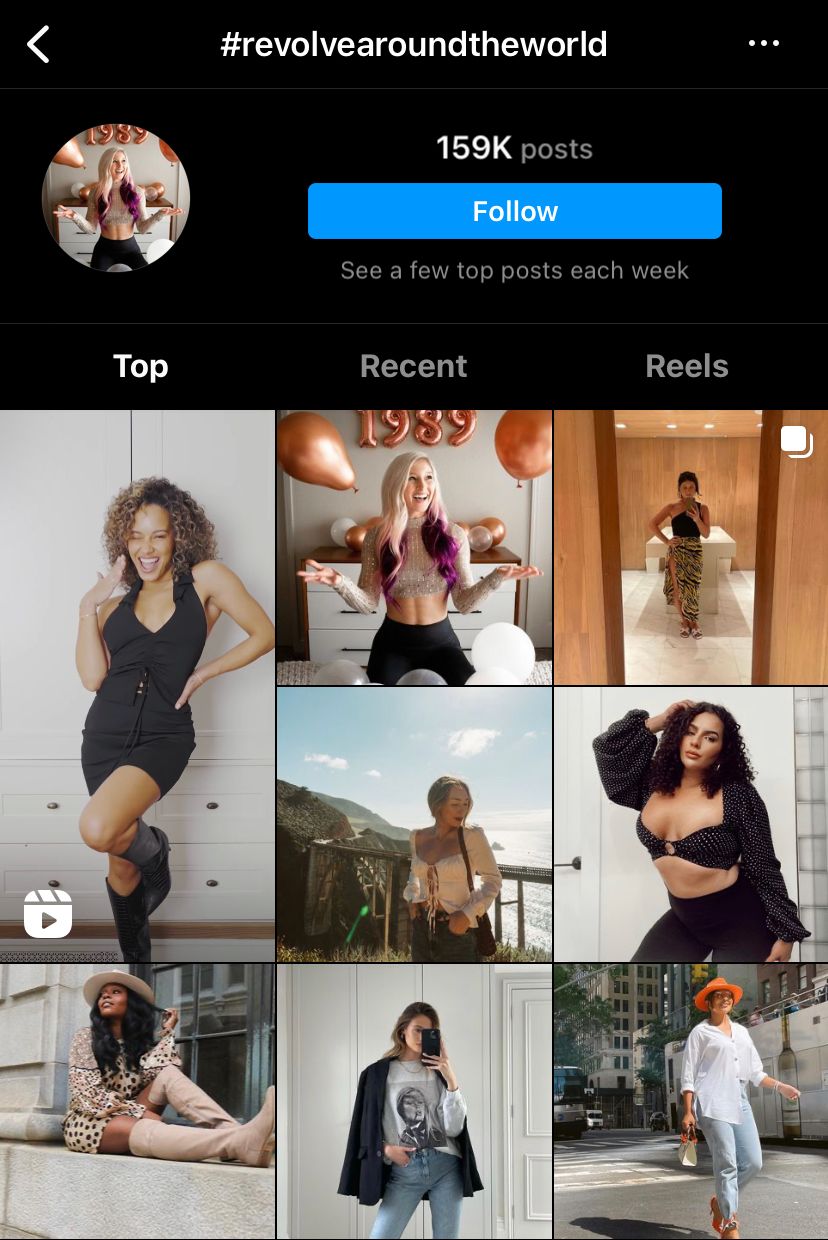
Placements
As mentioned above, we focus on regular hashtag use in this guide, so let's see some placements and ways to include them.
Feed
Every time you post something on your Feed, you can, and we recommend including hashtags; you can have them either in the post's caption or even in the comments section.
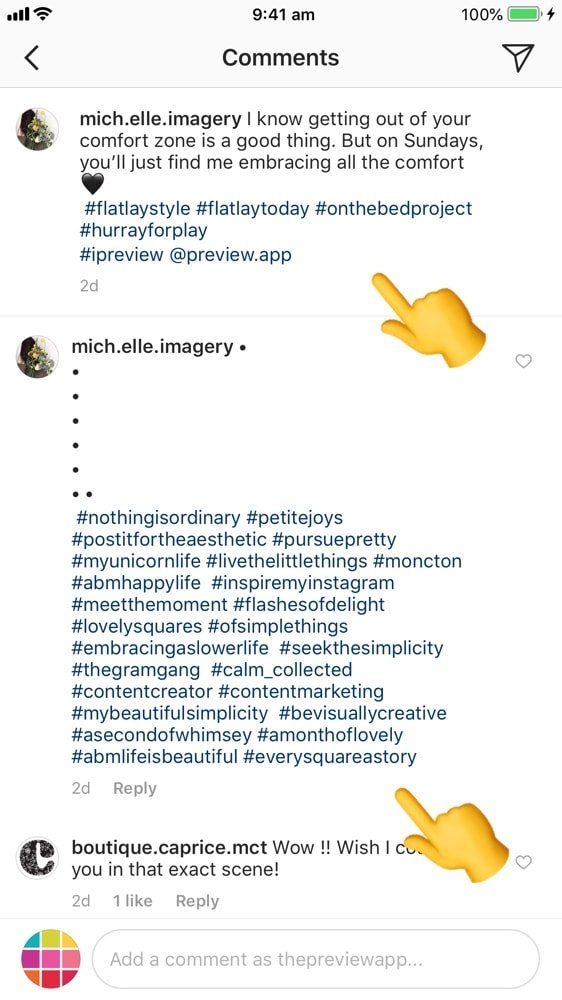
Avoid mixing the caption with the hashtags. If you opt for the caption placement, make sure to delimit the actual text from hashtags, as seen above. Keep the post clean and tidy so users can read easily about what you have to offer.
Would you like to get started with influencer marketing? Start a free trial with Social Cat and collaborate with micro-influencers to get sales, brand awareness and user-generated content.
Stories
While we have seen some methods of "hiding" hashtags in stories, we recommend avoiding this and just simply using one or maybe two hashtags in stories. There is no point in stretching some things, and at the end of the day, hashtags are helpful, but they won't "make or break" your game, as mentioned above.
If you post often, this might be an excellent placement to use your brand hashtag (mentioned above) if you have one. If you don't, now it might be a good time to create it and populate it over time.
How to research relevant hashtags
This might be the most exciting part of this guide, so please pay extra attention to it.
In a way, using hashtags is similar to SEO. However, it's tough to rank for popular hashtags; that's why we recommend going for "longer-tail hashtags".
Let's have a look at this example:
The hashtag #skincare has 89M searches at the time of writing this article. If you want to rank at the top of this search for this keyword, you need a lot of engagement, and I mean a lot of it in the first hour of publishing.
As there is a 99% chance you are a small brand-building your profile, this is impossible.
Instead of going for these very popular hashtags, we recommend going for the so-called "longer-tail hashtags", which are less competitive; they have an engaging community behind them and are specific to your niche.
Hashtag suggestion tool
First, let's use Instagram's hashtag suggestion tool to find relevant hashtags.
Let's start with something broad, like #skincare. As soon as we type this in, Instagram shows us a load of other related hashtags similar to the one we typed in, plus the volume of searches for each one of them.
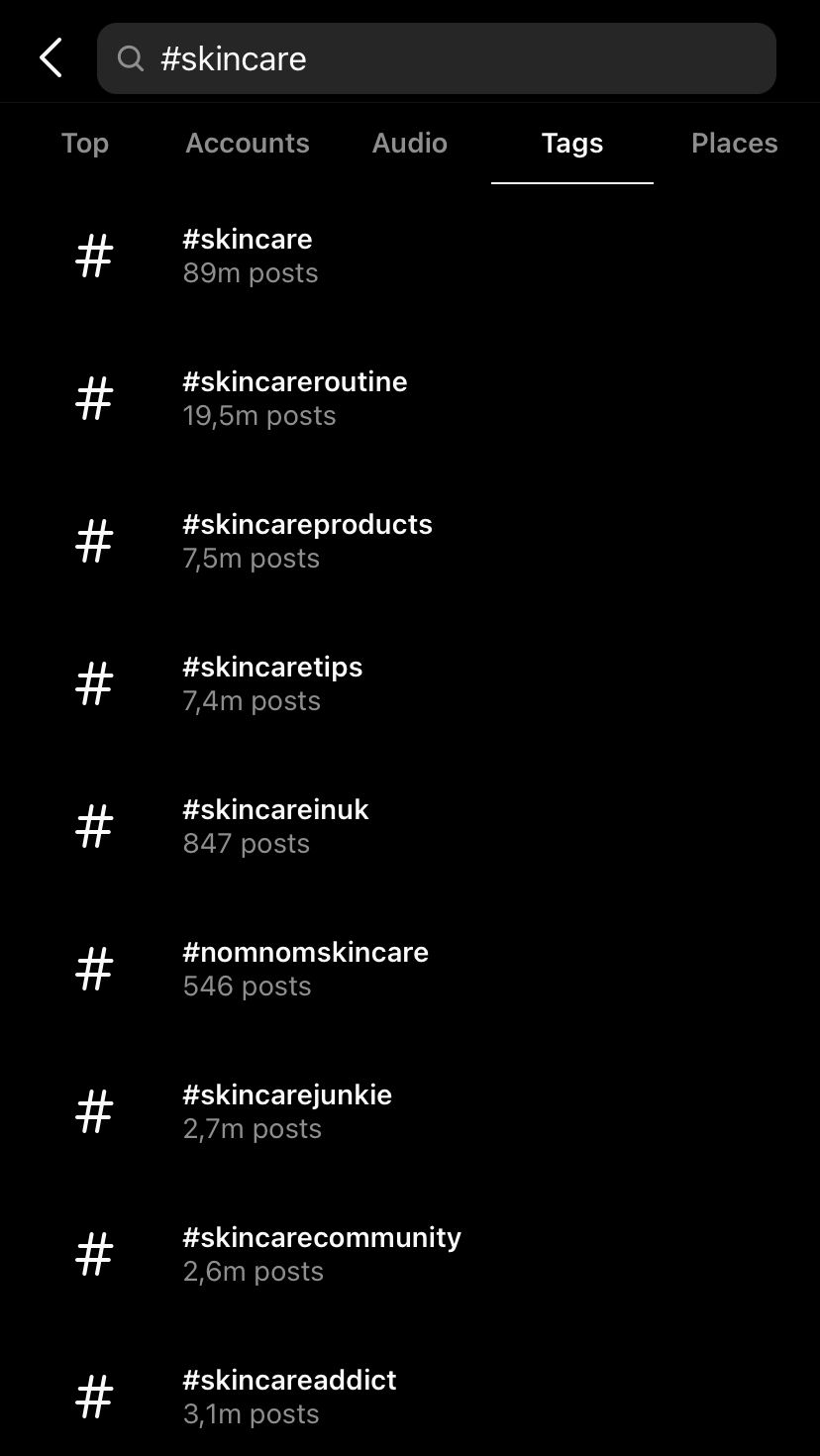
Not all the hashtags showing up in the search are relevant to your product, so make sure to check each one of them before you decide to use it.
You don't want to rank and be discovered for anything else except your product or type of content.
The possibilities here are endless, and basically, you need to go down the rabbit hole and find more and more hashtags.
💡 How engaging are the hashtags?
More often than not, it might be the case that the hashtag has tens of thousands of entries, but nobody actively posts on it.
For this reason, it is essential to double-check that the hashtags you've selected are active and that posts under these hashtags get a decent amount of likes and comments. If not, make a pass.
Competitor hashtags
Please have a look at your competitors in the niche and see what they are using. Sometimes, this can be a goldmine in finding hashtags that they don't take advantage of and you can leverage in your strategy.
Another way to find relevant hashtags is by looking at the top influencers and industry leaders in your niche.
As you continue to research more and more hashtags, it's essential — for your sanity, at least — to start building a hashtag database, which would allow you to keep track of your target hashtags, categorize them, and use them easily in your posts.
The simplest way here is to use the old, classic and efficient Microsoft Excel or Google Drive.
How to track performance
It's pretty easy to understand which hashtags are working and which are not.
There are two simple ways of doing this:
1. Check if you ended up in the top ranking category
The reason you want to see if you ended in the Top Ranking category for a hashtag is that your post will stay "pinned" there for a while, attracting more eyeballs. That's an extra few hundred impressions or sometimes even thousands of impressions, depending on the hashtag's volume.
Checking this manually for each hashtag might take a bit of time, but it will help you determine how effective your hashtags are.
2. Check Instagram insights
For a general overview, head over to insights.
Pick your Feed Post → Hit "View Insights" right under it → Scroll down to the "Reach" section.
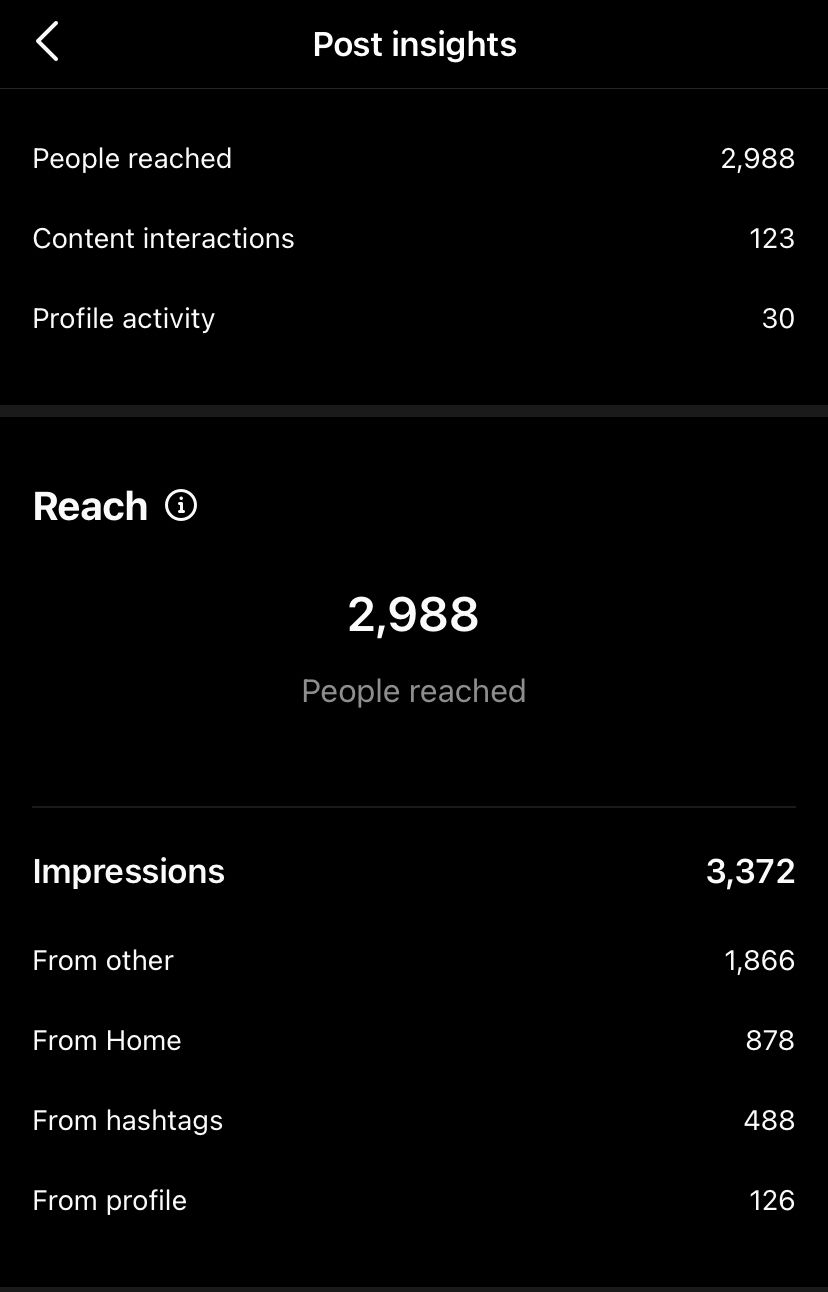
For this specific example, impressions from hashtags ranked at the bottom, which means there is room for improvement, and we can play around more with other hashtags until it reaches the top.
Final Notes
Researching and keeping track of hashtags takes time and patience.
We are aware that these are two limited resources for small brands trying to perform in competitive markets nowadays. As mentioned throughout the article, using hashtags will not "make or break" your insta-game or your business, but it will play a small part in it from our perspective.
And most of the time, this is the beauty of growth or growing a business, reaching a point where all these tiny parts are tuned the right way.
Would you like to get started with influencer marketing? Start a free trial with Social Cat and collaborate with micro-influencers to get sales, brand awareness and user-generated content.


